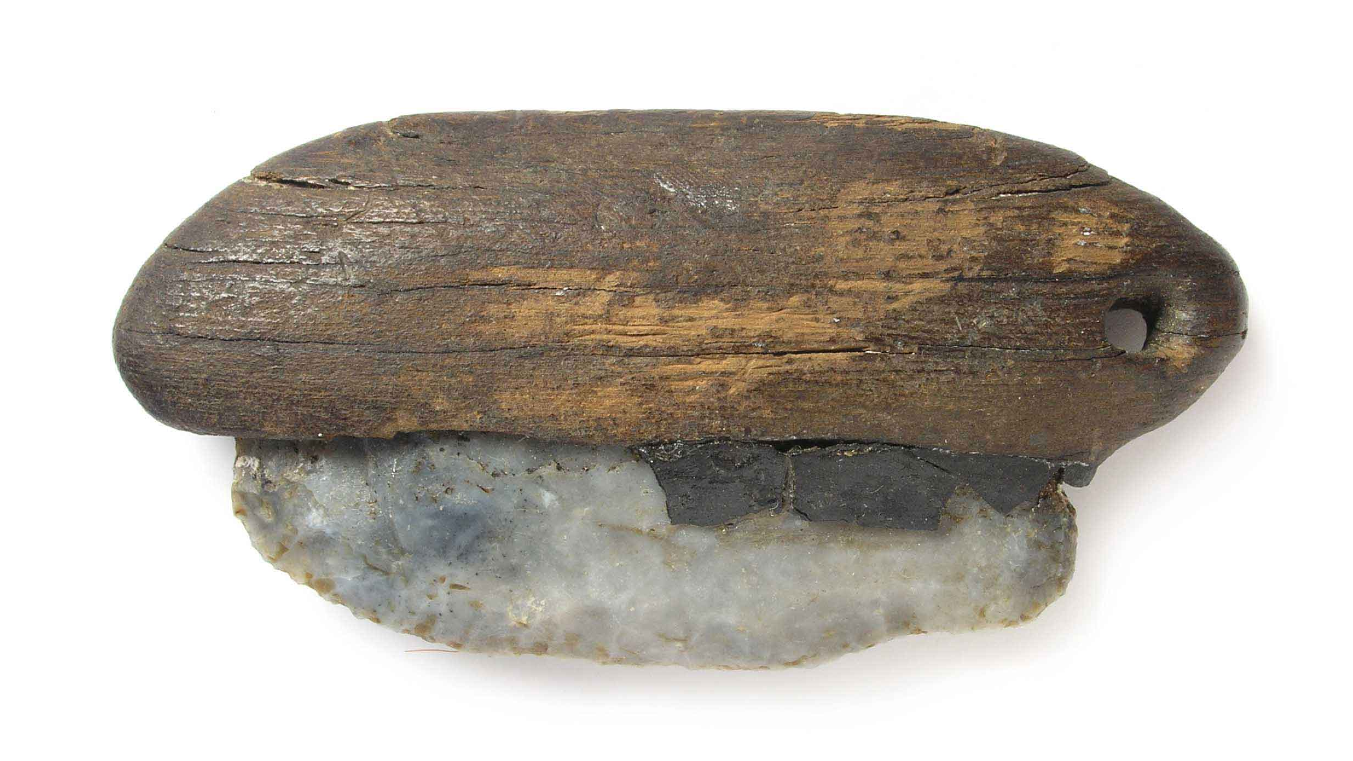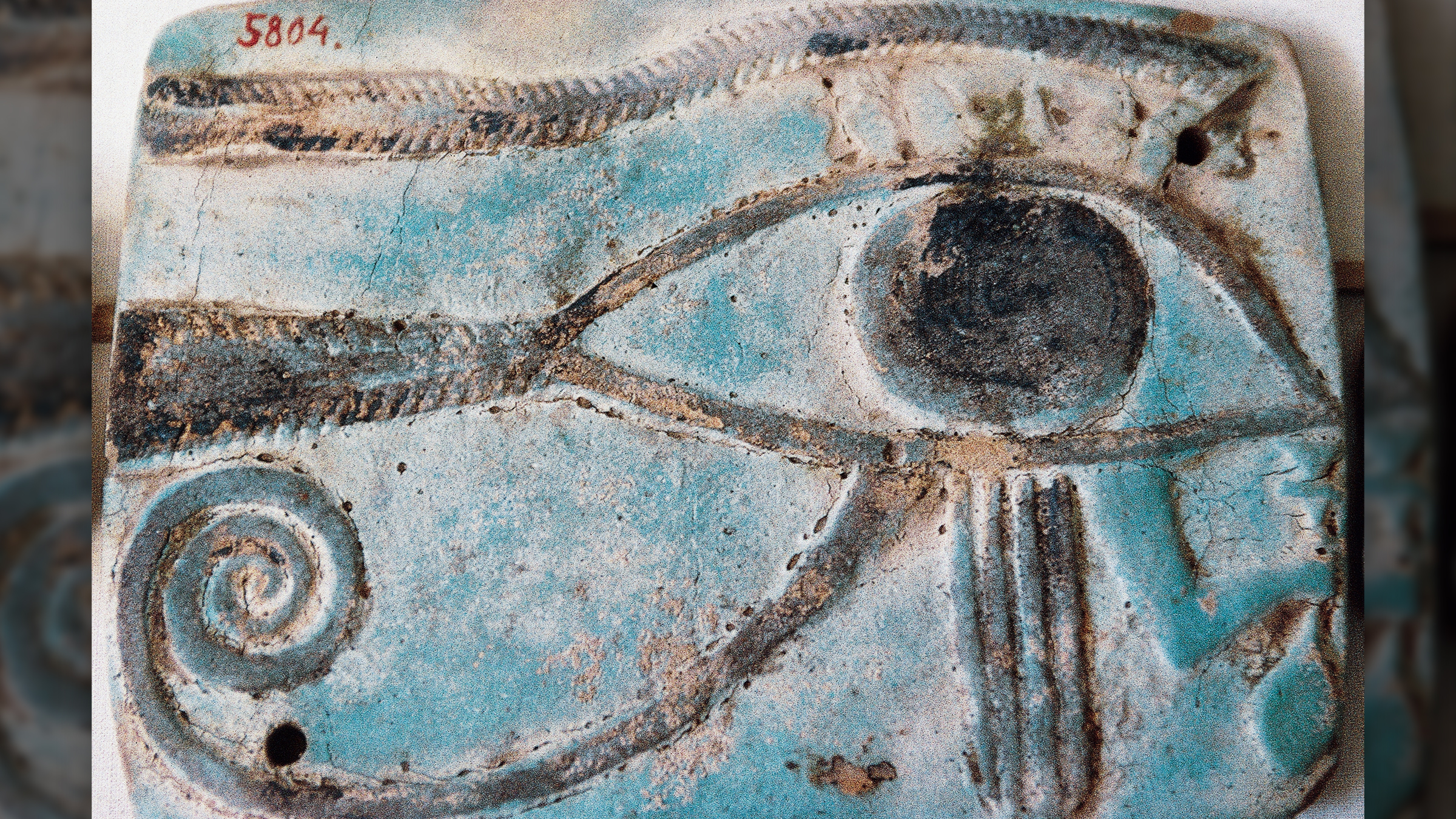Pfyn culture flint tool: World's oldest known 'Swiss Army' knife
Over five millennia ago, Stone Age people in Central Europe crafted wooden handles for their stone tools.

Name: Pfyn culture flint tool
What it is: A flint tool with a wooden handle and birch tar
Where it is from: Öhningen, southern Germany
When it was made: 3800 to 3500 B.C.
Related: Hohle Fels water bird: The oldest depiction of a bird in the world
What it tells us about the past:
This flint tool from a Neolithic archaeological site in southern Germany provides a rare look at how prehistoric knives were actually used: with a wooden handle that made them easier to grip without injury.
Sign up for the Live Science daily newsletter now
Get the world’s most fascinating discoveries delivered straight to your inbox.
The tool, which is on display at the Baden-Württemberg State Archaeological Museum (ALM), was found at a site called Wangen-Hinterhorn in Öhningen, a municipality on the border of Germany and Switzerland. Measuring just 2.9 inches (7.3 centimeters) long, the tool looks a bit like a small prehistoric Swiss Army knife. The sharp-edged flint blade was fastened to a wooden handle with birch tar, and a hole was drilled into the wood, likely so the tool could be hung.
This knife was discovered at a settlement site associated with the Pfyn culture. During the Neolithic period (4300 to 3500 B.C.), this culture spread from southern Bavaria to northern Switzerland and is well known for its pile dwellings — houses built on stilts in marshy land around the edges of lakes, rivers and wetlands.
Nearly 1,000 Alpine pile dwelling sites have been discovered to date in six countries, according to UNESCO, which added pile dwellings to its World Heritage list in 2011. Because they are located in wetlands, many of these archaeological sites have good conditions for the preservation of organic material that would normally disintegrate, like wood.
The prehistoric settlement of Wangen-Hinterhorn and its pile dwellings were first identified in the shallow water zone along Lake Constance by a farmer in 1856, but extensive excavations by archaeologists did not take place until the 1970s and 1980s.
The people of the Pfyn culture settled the area surrounding Lake Constance around 3900 B.C. They built their dwellings on stilts made from local trees and had domesticated animals and crops. However, they did not necessarily live there permanently; archaeologists have found waves of occupation over the course of a millennium. Artifacts preserved in the wetland environment suggest that the Pfyn people were innovating and experimenting with textiles and that they had also begun to manufacture copper objects.
Archaeologists have found a few other examples of wood-and-flint tools dated to the Pfyn culture. They include a flint dagger with a wood handle dated to 3000 to 2400 B.C., which is also at ALM, and a flint knife found in the 1940s that had impressions of grain seeds in the tar that held the stone tool into the wooden handle. Although the grain impressions suggest these unique objects may have been used for food processing, little else is known about their function.

Kristina Killgrove is a staff writer at Live Science with a focus on archaeology and paleoanthropology news. Her articles have also appeared in venues such as Forbes, Smithsonian, and Mental Floss. Killgrove holds postgraduate degrees in anthropology and classical archaeology and was formerly a university professor and researcher. She has received awards from the Society for American Archaeology and the American Anthropological Association for her science writing.
You must confirm your public display name before commenting
Please logout and then login again, you will then be prompted to enter your display name.










